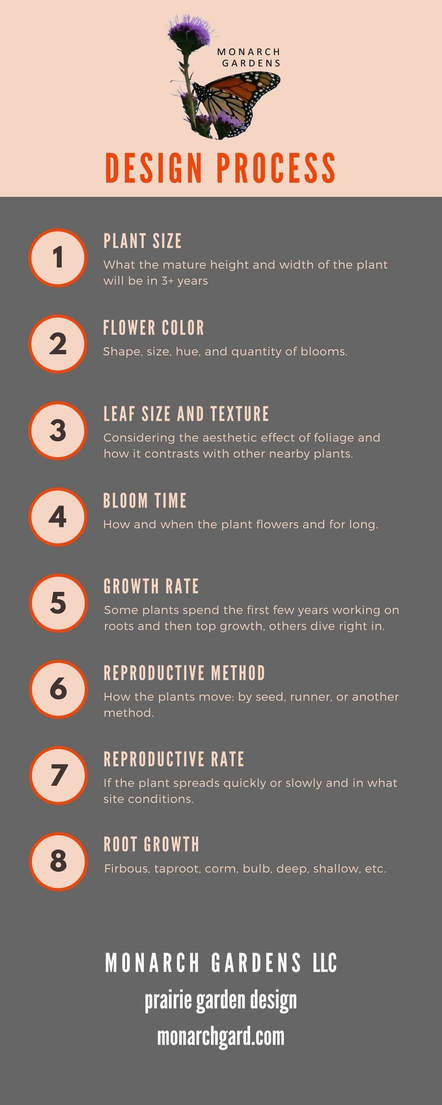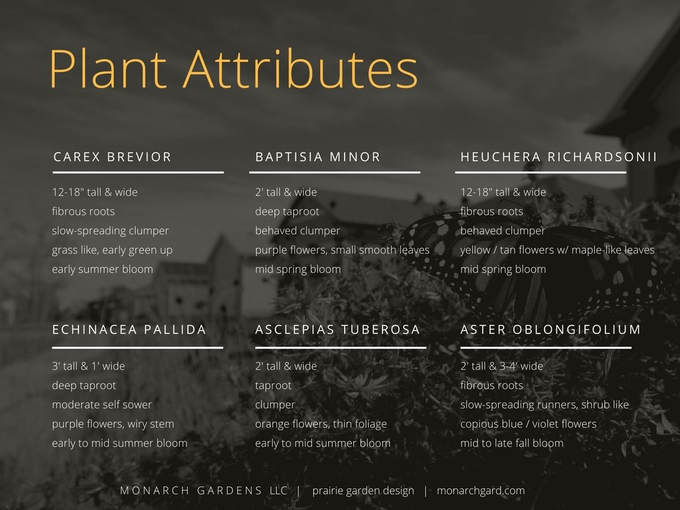As for the plants themselves, color, size, texture, and shape matter. So does when the plants bloom. But that's only half the story in designing a low-maintenance, sustainable garden for wildlife where we don't want to use fertilizer or mulch, and we want to keep irrigation to a minimum. The other half is matching plants to each other in how they grow above AND below ground, as well as how they reproduce. You wouldn't put an aggressive self sower in a small garden, and you wouldn't place a tame clumper among more energetic growers. Let's see if I can break it down for you in order of design process when looking at plants:
Let's look at a simple example. Take a small 100' bed in clay soil and sun, a plant list might look like this:
The taproot plants will dig down below the fibrous plants, so there won't be as much resource competition. And the clumping, thick, fibrous-rooted nature of the sedge should help slow down the self sowers (coneflower) and the root runner (aster).
So that's a little insight into how I think about garden plants when I have the base plan drawn up and go into the nitty gritty. Of course, besides all this practical and aesthetic stuff, I'm also thinking about wildlife. What is the plant a host to, what will it attract and support from egg to wing, and in what amounts and in what diversity? But that's another post.




 RSS Feed
RSS Feed

